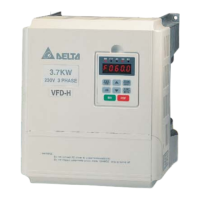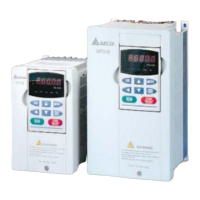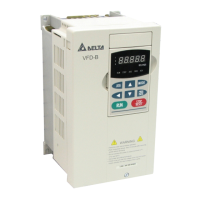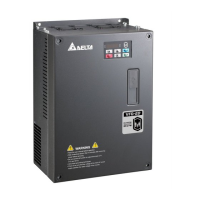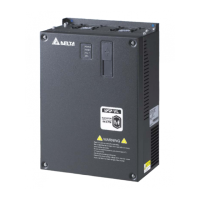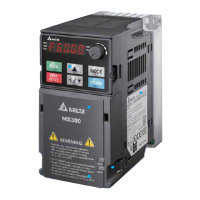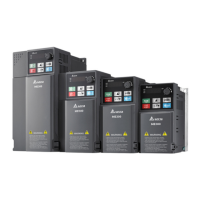58
Common Problems and Solutions
Fault Name Fault Descriptions Corrective Actions
The over-current hardware
trip circuit detects an
abnormal increase in current.
Check whether the motor output power
corresponds to the AC drive output power.
Check the wiring connections between the AC
drive and motor for possible short circuits.
Increase the Acceleration time 1 and 2 (Pr. 10,
12).
Check for possible excessive loading conditions
at the motor.
After short-circuit being removed, if there is any
abnormal conditions when operating the AC
Motor Drive, it should be sent back to the
agency or manufacturer.
The AC drive detects that the
DC bus voltage has exceeded
its maximum allowable value.
Check whether the input voltage falls within the
rated AC drive input voltage. Check for
possible voltage transients.
Bus over-voltage may also be caused by motor
regeneration. Either increase the Decel time or
add an optional braking resistor. Check whether
the required braking power is within the
specified limits.
The AC drive temperature
sensor detects excessive
heat.
Ensure that the ambient temperature falls
within the specified temperature range.
Make sure that the ventilation holes are not
obstructed.
Remove any foreign objects on the heatsinks
and check for possible dirty heatsink fins.
Provide enough spacing for adequate
ventilation.
The AC drive detects that the
DC bus voltage has fallen
below its minimum value.
Check whether the input voltage falls within the
rated AC drive’s input voltage.
The AC drive detects
excessive drive output
current.
The AC drive can withstand
up to 150% of the rated
current for a maximum of 60
seconds.
Check whether the motor is overloaded.
Reduce the torque compensation setting as set
in Pr.54.
Increase the AC drive’s output capacity.
Call 1(800)985-6929 for Sales
Call 1(800)985-6929 for Sales
